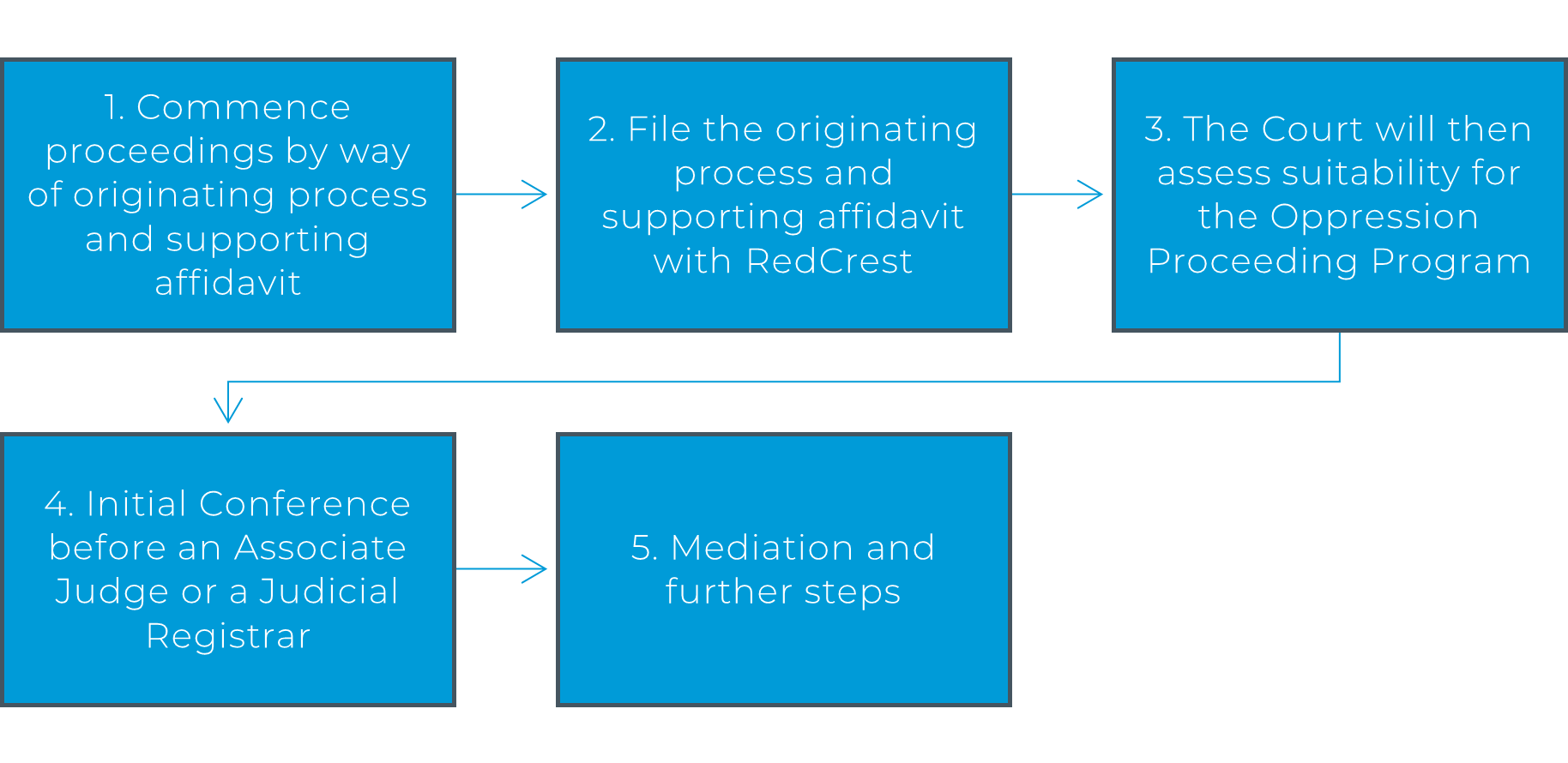27 April 2025
5 min read
Published by:

The Supreme Court of Victoria offers a streamlined, efficient and cost-effective case management process for applications seeking relief under Section 233 of the Corporations Act 2001 (Cth) (the Act) where it is alleged that a company’s affairs have been conducted in an oppressive manner. Below, we outline the process of commencing such a claim, along with examples of oppressive conduct and remedies the Court may order.
Examples of conduct that may give rise to a claim include:

1. Commencing proceedings by way of originating process and supporting affidavit
In accordance with Rule 2.2(1)(a) of the Supreme Court (Corporations) Rules 2013 (Vic) (Rules), applications under section 233 of the Act should be made by way of originating process (Form 2), supported by an affidavit in accordance with Rule 2.4(1) of the Rules.
The affidavit must:
2. Filing
The originating process and accompanying affidavit must be filed electronically with the Court via RedCrest. The costs for filing an application can be found in the Supreme Court of Victoria – Prothonotary’s Office Fees.
3. Assessing the suitability of the claim for the Oppression Proceeding Program
After the application is filed, the Corporations List Judge will assess whether the case is suitable to be managed under the Supreme Court of Victoria’s ‘Oppression Proceeding Program’ (the Program), or whether it should be managed and determined by a Judge.
The Program is designed to streamline the procedure for the management of oppressive conduct proceedings in the Supreme Court of Victoria. Subject to any contrary order of the Court, the Program applies to all applications made under section 233 of the Act.
Determining whether a matter is appropriate for the Program can be complicated when the application involves a publicly listed company or complex trust structures. That said, many oppression claims relate to small or family-run businesses, and the value of the business is not a substantive consideration. If the matter is considered suitable, it will be referred into the Program.
4. Initial conference
Once the matter has been referred into the Program and the defendant(s) have filed a Notice of Appearance, the application will be made returnable for an initial conference before an Associate Judge or a Judicial Registrar. Both parties and their practitioners are expected to attend this conference.
At the initial conference, the Associate Judge or Judicial Registrar will determine whether the matter is eligible for referral to mediation or whether any preliminary steps should be undertaken.
These preliminary steps may include:
It is unlikely that orders for points of claim, points of defence and more detailed affidavits will be made until after mediation.
If orders are sought at the initial conference that are beyond the jurisdiction of the Associate Judge or the Judicial Registrar, or if the presiding judicial officer believes that the application should be referred back to the Corporations List Judge, the referral will be made at this point. Otherwise, the matter will proceed to mediation.
5. Mediation
Matters heard under the Program will be mediated by either an Associate Judge or a Judicial Registrar. In some cases, the Court may consider it appropriate to refer the matter to external private mediation.
If the matter is not resolved at mediation, the Associate Judge or Judicial Registrar may make consent orders for the future conduct of the matter.
Should the matter remain unresolved, the Court may then refer the application to a judge for further directions and/or a hearing.
The Court can make any order it considers appropriate, including but not limited to:
The Supreme Court’ process aims to facilitate just, timely and cost-effective resolution in the early stages of disputes involving oppressive conduct in the affairs of a company. The process is designed to assist applicants in avoiding significant costs while also enabling the Court to manage and resolve a significant number of matters in an efficient and cost-effective way.
Further procedural guidance can be found in the Oppressive Conduct of the Affairs of a Company Practice Note (SC CC 8).
If you have any questions on commencing an oppressive conduct claim, please get in touch with our team below.
Disclaimer
The information in this publication is of a general nature and is not intended to address the circumstances of any particular individual or entity. Although we endeavour to provide accurate and timely information, we do not guarantee that the information in this article is accurate at the date it is received or that it will continue to be accurate in the future.
Published by: